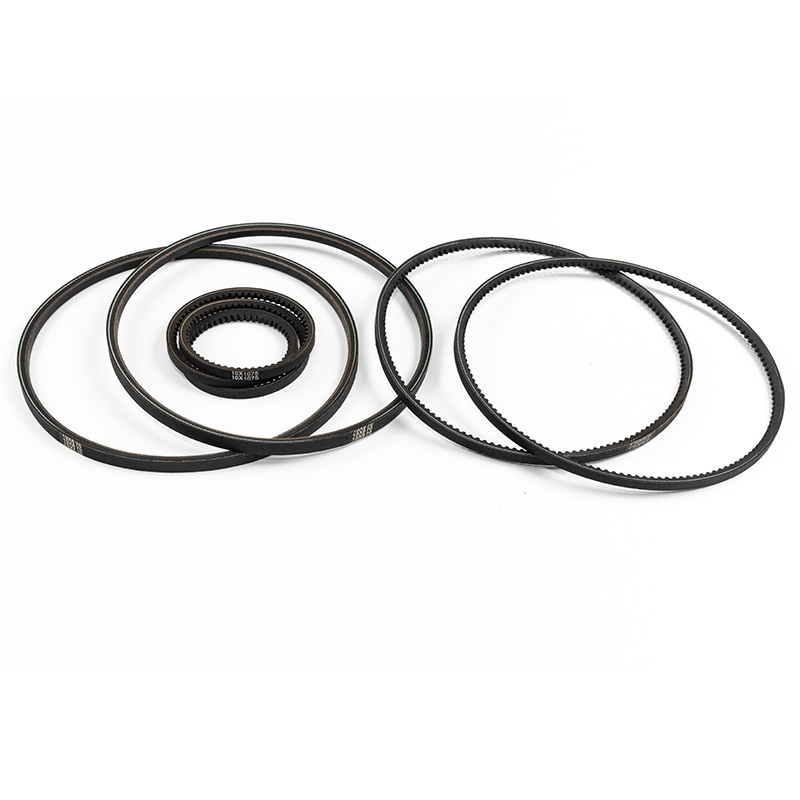EPDM (Ethylene Propylene Diene Monomer) rubber automotive raw edge V-belts are designed to handle high-speed operations in automotive engines effectively. Here's how they perform under such conditions:
High Temperature Resistance: EPDM rubber excels in high-temperature environments due to its unique chemical structure. The material can endure temperatures ranging from -40°C to 120°C, with some formulations tolerating up to 150°C. This high-temperature resistance is vital in high-speed automotive engines, where friction between the belt and pulleys generates significant heat. The belt must maintain its mechanical properties, such as elasticity and tensile strength, to function correctly without becoming brittle or deformed. EPDM's ability to retain its integrity under thermal stress ensures prolonged belt life and reliable performance, reducing the need for frequent replacements and minimizing downtime.
Flexibility and Durability: The molecular architecture of EPDM rubber provides flexibility, which is crucial for adapting to the dynamic conditions within high-speed engines. As the engine operates at high speeds, the belt must bend and flex continuously around pulleys without cracking or losing shape. This flexibility reduces the risk of material fatigue, which can bring about belt failure. EPDM's durability ensures it can withstand repeated mechanical stress over time, maintaining its structural integrity and performance. This characteristic is particularly important in modern engines, which require belts to function reliably under varying loads and speeds.
Wear Resistance: The raw edge design of EPDM V-belts enhances their operational efficiency by improving contact with the pulleys. This design reduces slippage, ensuring consistent power transmission and minimizing energy loss. The even distribution of stress along the belt length prevents localized wear, which is common in belts with inferior designs. EPDM rubber's intrinsic wear resistance further extends the belt's operational life, making it less prone to abrasion and surface degradation. This durability is essential in high-speed applications where the belt is subjected to continuous high-friction conditions.
Reduced Vibration and Noise: EPDM rubber's damping properties significantly reduce vibration and noise levels in high-speed engine operations. The material can absorb and dissipate vibrational energy, preventing it from being transmitted through the belt system. This reduction in vibration minimizes wear on other engine components, such as bearings and pulleys, and enhances overall engine smoothness. The noise reduction contributes to a quieter and more pleasant driving experience. The belt's ability to maintain a stable and quiet operation at high speeds is a testament to its advanced material properties and design.
Chemical Resistance: EPDM rubber exhibits outstanding resistance to a wide range of automotive chemicals, including oils, coolants, and various hydraulic fluids. In high-speed engines, the belt is often exposed to these substances, which can degrade less resistant materials. EPDM's chemical resistance ensures that it maintains its mechanical properties and structural integrity when in contact with these fluids. This resistance is critical for preventing swelling, cracking, and weakening of the belt, which could bring about premature failure. By withstanding chemical exposure, EPDM V-belts offer reliable performance and longevity.
Epdm Rubber Automotive Raw Edge V-Belts




 English
English 中文简体
中文简体

 View More >>
View More >> View More >>
View More >> View More >>
View More >> View More >>
View More >> View More >>
View More >> View More >>
View More >> View More >>
View More >> View More >>
View More >> View More >>
View More >> View More >>
View More >> View More >>
View More >> View More >>
View More >>
